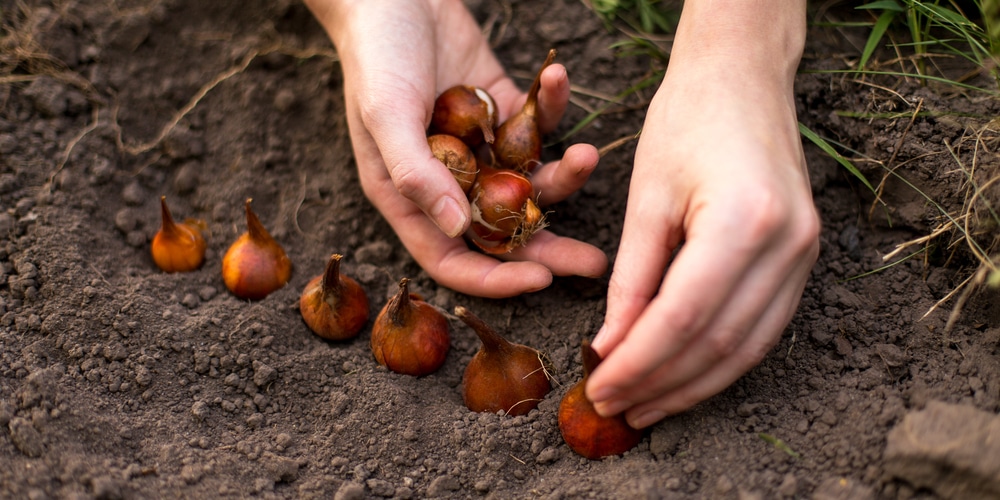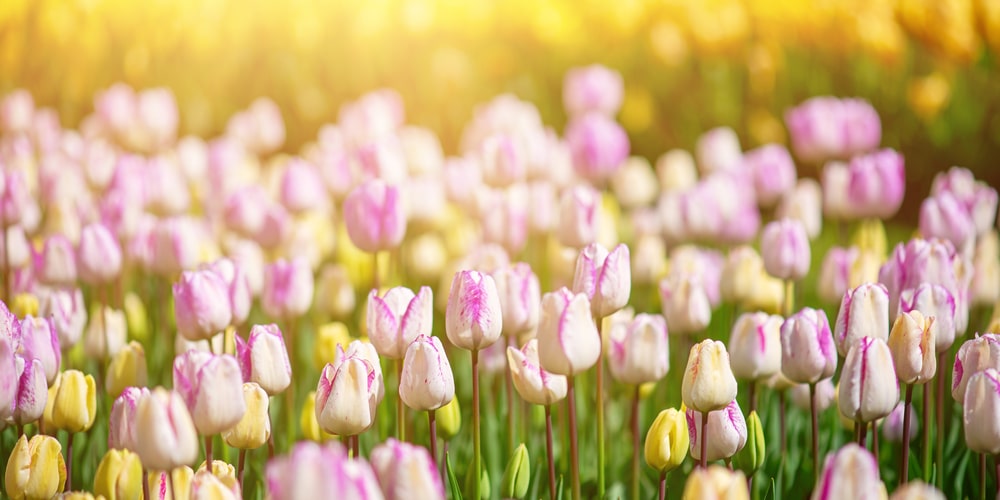Who doesn’t like how tulips look? These brightly-colored delicate-looking flowers will brighten any garden during the spring as soon as the ground awakens from the dormancy period during the winter.
And the best part is that you can choose among different varieties: you’ll have no issues finding one that suits your taste. To enjoy their beauty to the maximum, you should plant them in the fall.
But the time of the year that will give you the best blooms depends on where you live.
To learn when to plant tulips in Iowa, keep reading. Here, we include everything you must know about these flowering bulbs and how to grow them successfully.
Iowa falls under hardiness zones between 4 and 6 and doesn’t get extreme temperatures. It is the perfect region to grow most plants that don’t need extreme conditions to thrive.
But let’s jump to the next section to learn about taking care of tulips in this state!
When to Plant Tulips in Iowa
Tulips are not particularly challenging to grow. In Iowa, precipitation varies: the southeastern portion of the state gets around 38 inches of water annually, while the central parts of the region only average about 14 inches per year.
Depending on where you live, you might need to adjust your watering schedule. If it rains weekly, suspend watering. Indeed, tulips will struggle in soggy soil, which might cause your plants to die.
Avoid watering bulbs unless the climate is dry: rainfall should provide your tulips with more than enough moisture.
Also, don’t forget to place your tulips in a sunny location: they need at least four to six hours of direct sunlight per day to produce the bright-colored flowers we all love!
But besides taking care of them, you should also know when to plant tulips in Iowa. Not knowing the optimal time of the year to plant them might result in unsuccessful bulbs.
As we mentioned, you should plant your bulbs during the fall, before the ground freezes. As a rule of thumb, count 6 to 8 weeks before frost. Don’t forget that planting tulips too early might lead to diseases and cause developmental problems.
You can plant varieties with different blooms times to get tulips from early to late spring. Don’t forget to always check with your local weather: avoid relying too much on averages and predictions, as the climate can drastically change from one year to the next.
Usually, it is a good idea to plant your bulbs when the average night-time temperatures don’t get below 40F.
In Iowa, the ideal time to plant tulips is around October. If you plant them around this time, your bulbs will have enough time to develop an efficient root system before the ground freezes in the winter.
Don’t forget that tulips are tolerant to low temperatures, and don’t mind the snow (which might insulate the foliage from extreme cold): in some areas of the state, you may be able to plant your tulips as late as mid-November.
Bulbs shouldn’t linger above ground for too long: avoid delaying planting them after purchase as you might cause some development problems. In the worst-case scenario, your bulbs may never produce flowers if you wait too much.
Tulips Care: Our Tips
Besides choosing a sunny location for your tulips, you must ensure the soil is well-draining and slightly acidic. Don’t forget that tulips don’t do well in areas with excessive moisture.
Also, protect your tulips from strong winds and extreme heat (if necessary). If you are planting more than one tulip (and you should), remember to space them four to six inches apart.
Plant your bulbs to a depth of three to four times their diameters. Consider planting your tulips in clusters to achieve a gorgeous visual impact in your garden.
Avoid purchasing bulbs that look unhealthy. Healthy tulips shouldn’t have black spots and must have a papery cover on the outside.
Try to stay away from cheap bulbs, as they usually don’t bloom well. Instead, check at your local garden store or online. You can save some money by purchasing pre-bagged mixes.
Consider feeding your tulips with a balanced fertilizer or adding organic material or compost to enhance your plants’ growth. Doing so will also help your tulips gather energy for producing blooms the following year.
Related Article: How Long do Tulip Bulbs Last?


